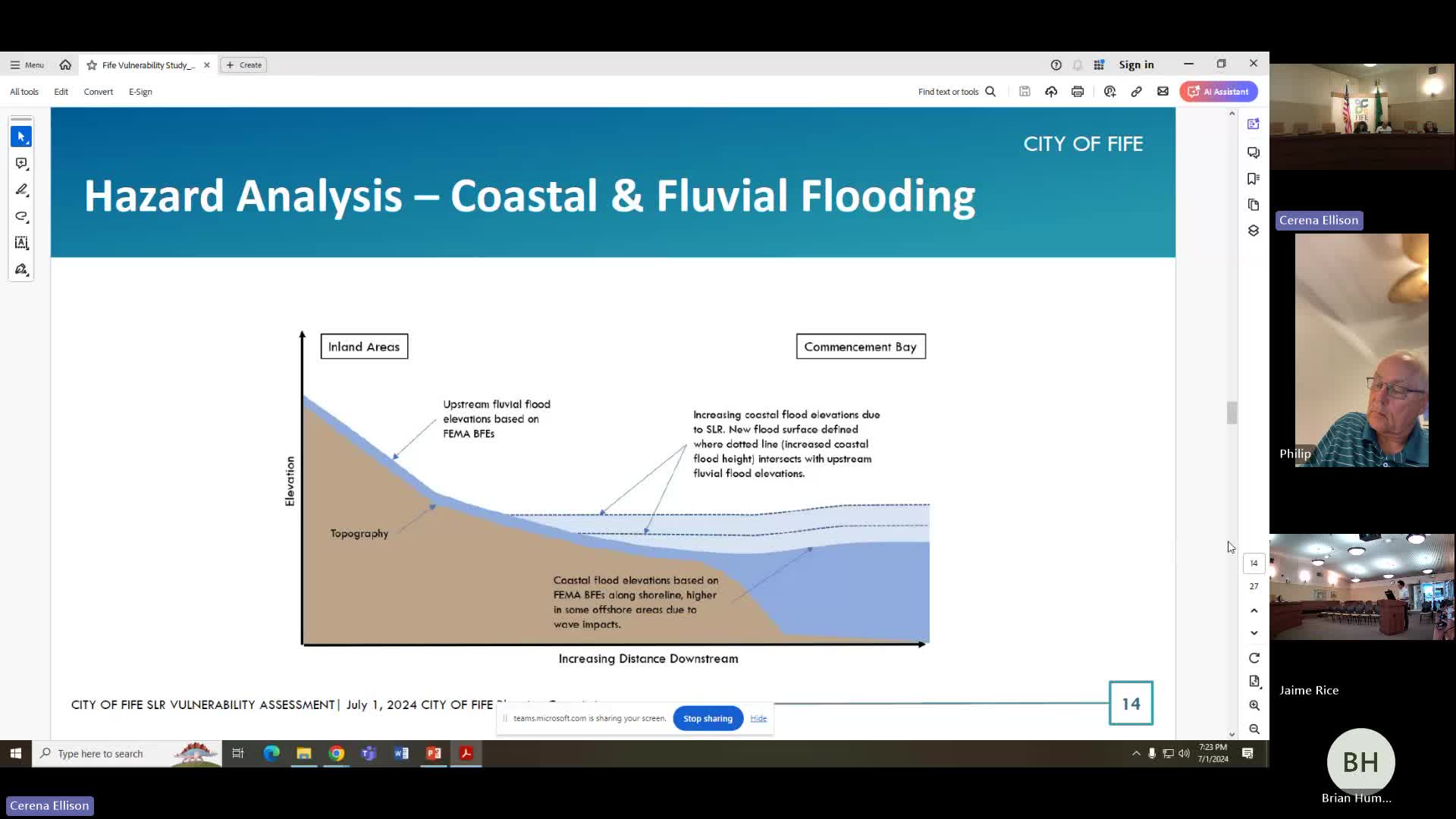Vulnerability study reveals urgent need for flood mitigation
July 01, 2024 | Fife, Pierce County, Washington

This article was created by AI summarizing key points discussed. AI makes mistakes, so for full details and context, please refer to the video of the full meeting. Please report any errors so we can fix them. Report an error »

In a recent government meeting, officials discussed the findings of a vulnerability study focused on the impacts of rising sea levels on local infrastructure. The study, which utilized data from a similar assessment conducted for Tacoma, highlighted the potential effects of incremental sea level rise, particularly in vulnerable areas adjacent to shorelines.
The analysis projected a 1.2-foot rise in sea levels by 2050, with the northern parts of the city facing the most significant risks due to the confluence of creeks and rivers exacerbating flooding conditions. Key areas identified as at risk include those near Blair Waterway and other low-lying regions.
Officials emphasized the importance of understanding the \"battle of elevation,\" where rising sea levels necessitate proactive measures to elevate land and infrastructure. The study employed a qualitative ranking system to assess various assets, including public services, utilities, and transportation infrastructure, based on their exposure, sensitivity, and adaptive capacity to flooding.
City Hall, for instance, was ranked low in exposure but high in sensitivity due to its critical role in emergency management. Conversely, recreational facilities received lower vulnerability scores, indicating greater adaptability during storm events.
Moving forward, the city plans to gather feedback on the draft report and develop mitigation measures tailored to the identified vulnerabilities. The goal is to ensure that the findings lead to actionable steps rather than being relegated to a shelf. The meeting concluded with an invitation for questions and comments from the commissioners, signaling a collaborative approach to addressing the challenges posed by climate change.
The analysis projected a 1.2-foot rise in sea levels by 2050, with the northern parts of the city facing the most significant risks due to the confluence of creeks and rivers exacerbating flooding conditions. Key areas identified as at risk include those near Blair Waterway and other low-lying regions.
Officials emphasized the importance of understanding the \"battle of elevation,\" where rising sea levels necessitate proactive measures to elevate land and infrastructure. The study employed a qualitative ranking system to assess various assets, including public services, utilities, and transportation infrastructure, based on their exposure, sensitivity, and adaptive capacity to flooding.
City Hall, for instance, was ranked low in exposure but high in sensitivity due to its critical role in emergency management. Conversely, recreational facilities received lower vulnerability scores, indicating greater adaptability during storm events.
Moving forward, the city plans to gather feedback on the draft report and develop mitigation measures tailored to the identified vulnerabilities. The goal is to ensure that the findings lead to actionable steps rather than being relegated to a shelf. The meeting concluded with an invitation for questions and comments from the commissioners, signaling a collaborative approach to addressing the challenges posed by climate change.
View full meeting
This article is based on a recent meeting—watch the full video and explore the complete transcript for deeper insights into the discussion.
View full meeting
